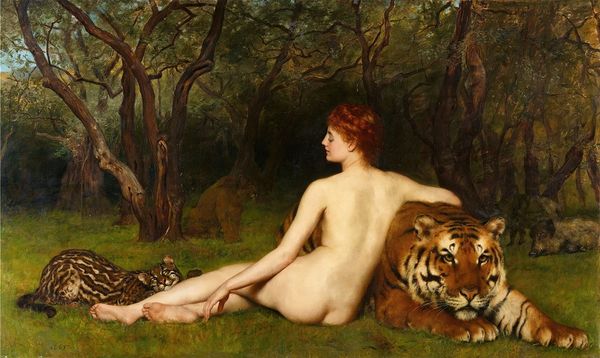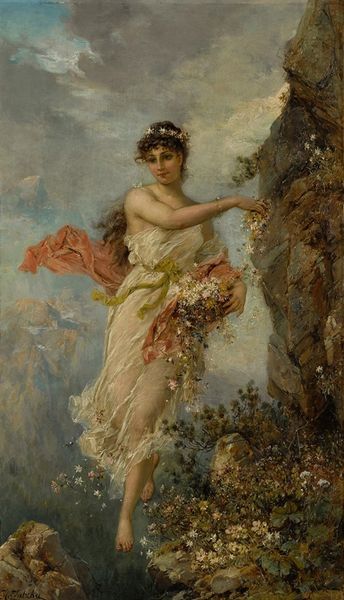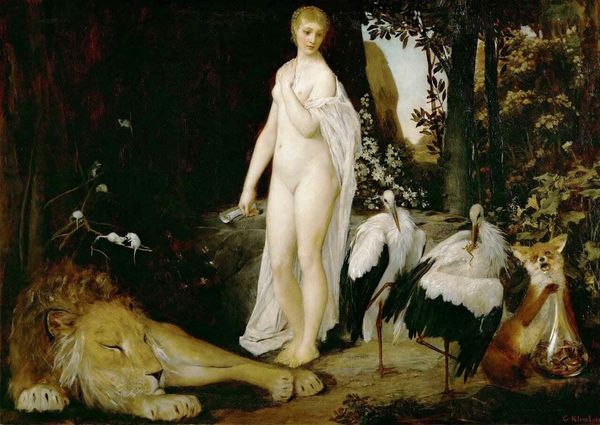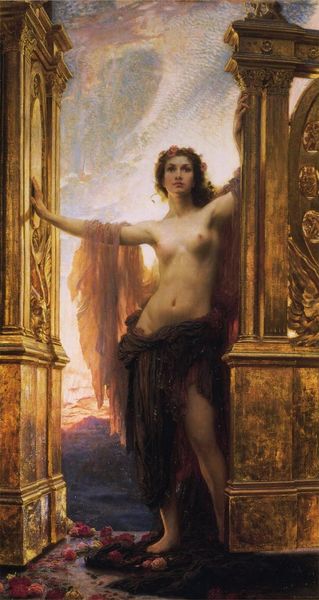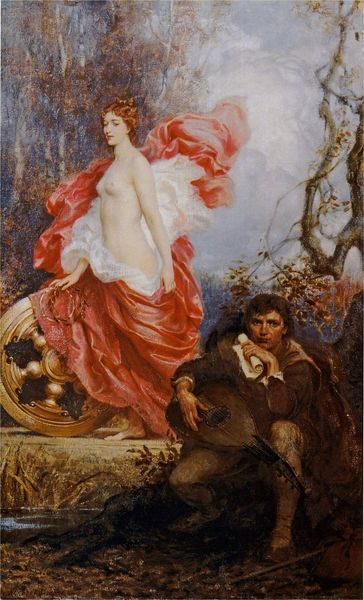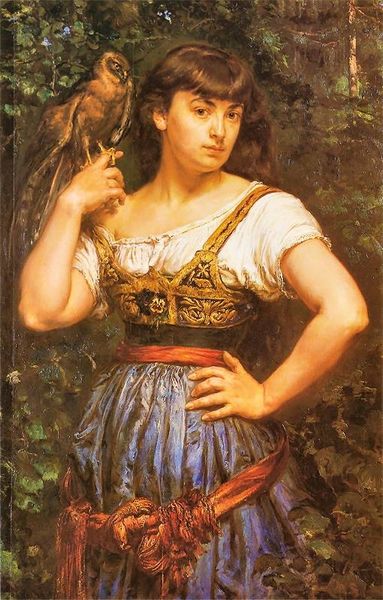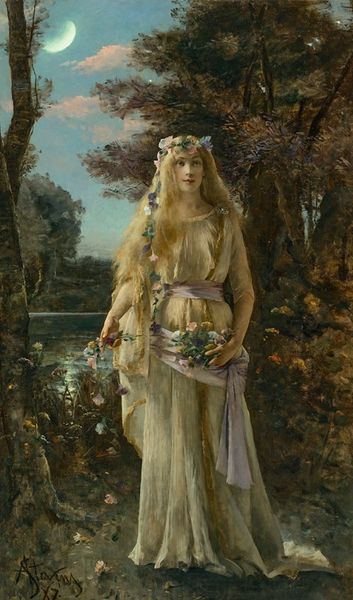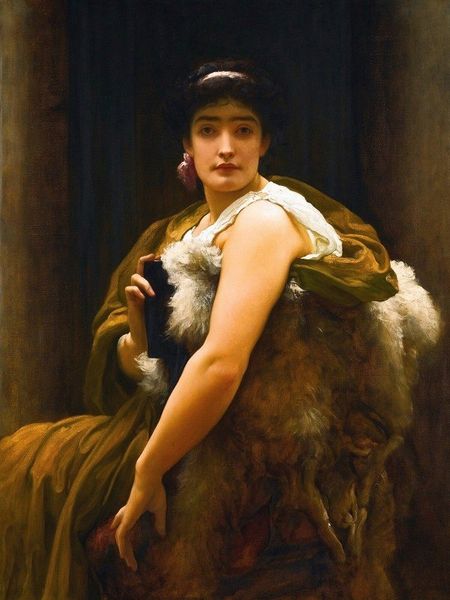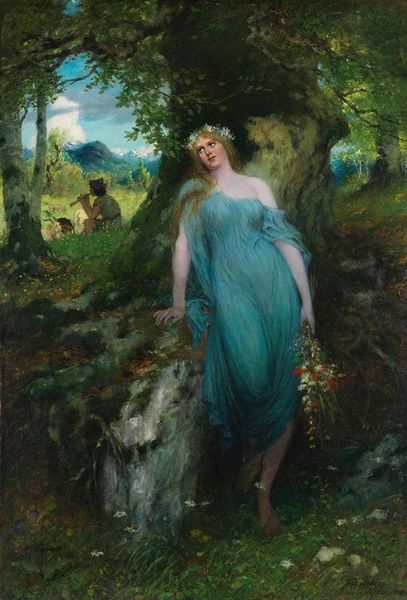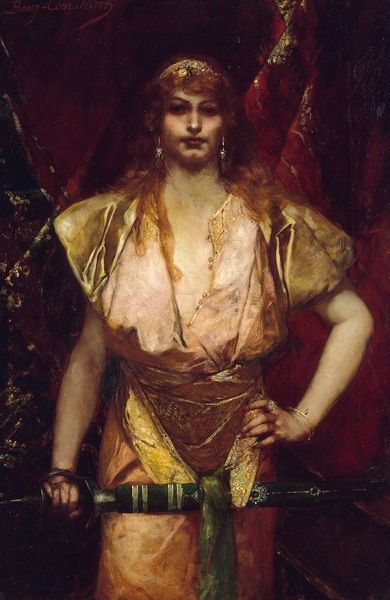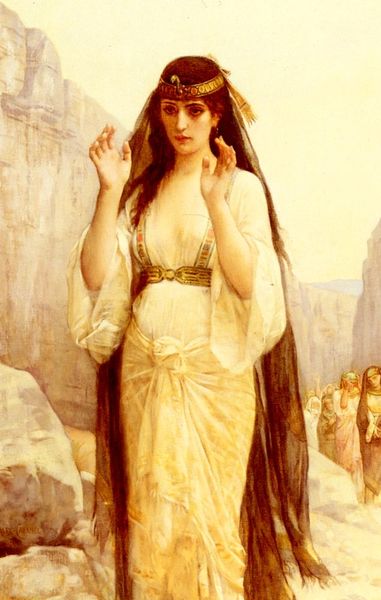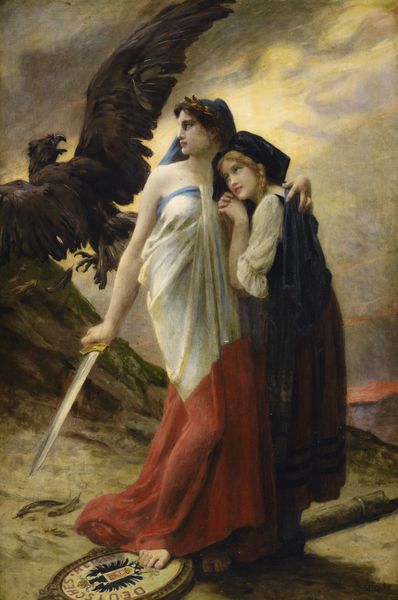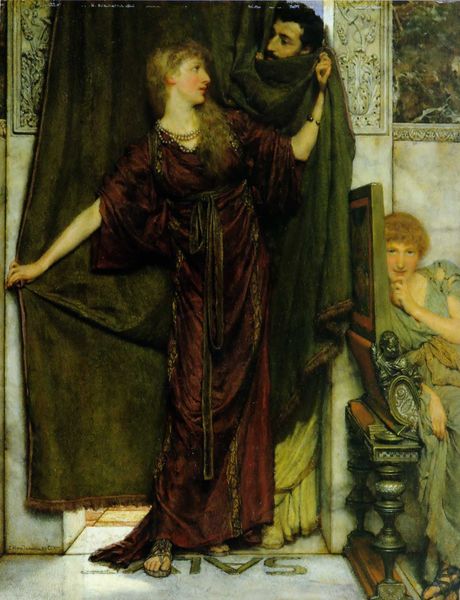
Copyright: Public domain
Curator: There's a striking serenity to this composition. Almost a melancholy, wouldn’t you say? Editor: Indeed. And the subject—allow me to introduce you to John Collier’s "The Priestess of Bacchus," completed in 1889. The work embodies a late Victorian fascination with classical themes, painted during an era grappling with rapid social change and looking back to idealized versions of the past. Curator: Ah, Bacchus. So much for serenity. This character's connection to ancient Roman traditions intrigues me. A wreath of ivy, a pinecone-tipped staff, the raw pelt of a tiger draped around her…she’s not just any priestess, is she? She evokes something deeper, something wilder. Editor: Precisely. Each element acts as a visual cue linking her to the Dionysian mysteries. The tiger pelt itself becomes incredibly powerful. Curator: It hints at Bacchic frenzy. It suggests the blurring of boundaries between the human and animal realms, doesn't it? The priestess exudes not only calm authority but also the simmering potential for ecstatic, untamed power. Editor: It does serve as a reminder that such depictions often tell us more about the anxieties and desires of the period they were created in. Victorian society both yearned for and feared such liberation. How potent must this symbolism of tigers, and female power, have seemed? Curator: In that sense, Collier is part of a wider trend. "The Priestess of Bacchus" offers a window into the cultural mindset. This work reflects how classical myths were repurposed, reshaped, and then presented. Not necessarily in a true context. Editor: It speaks to how enduring these symbols can be, but I see your point, that they often tell us more about a specific cultural moment. Thanks for that, that's something that enriches my appreciation for Collier's work.
Comments
No comments
Be the first to comment and join the conversation on the ultimate creative platform.

